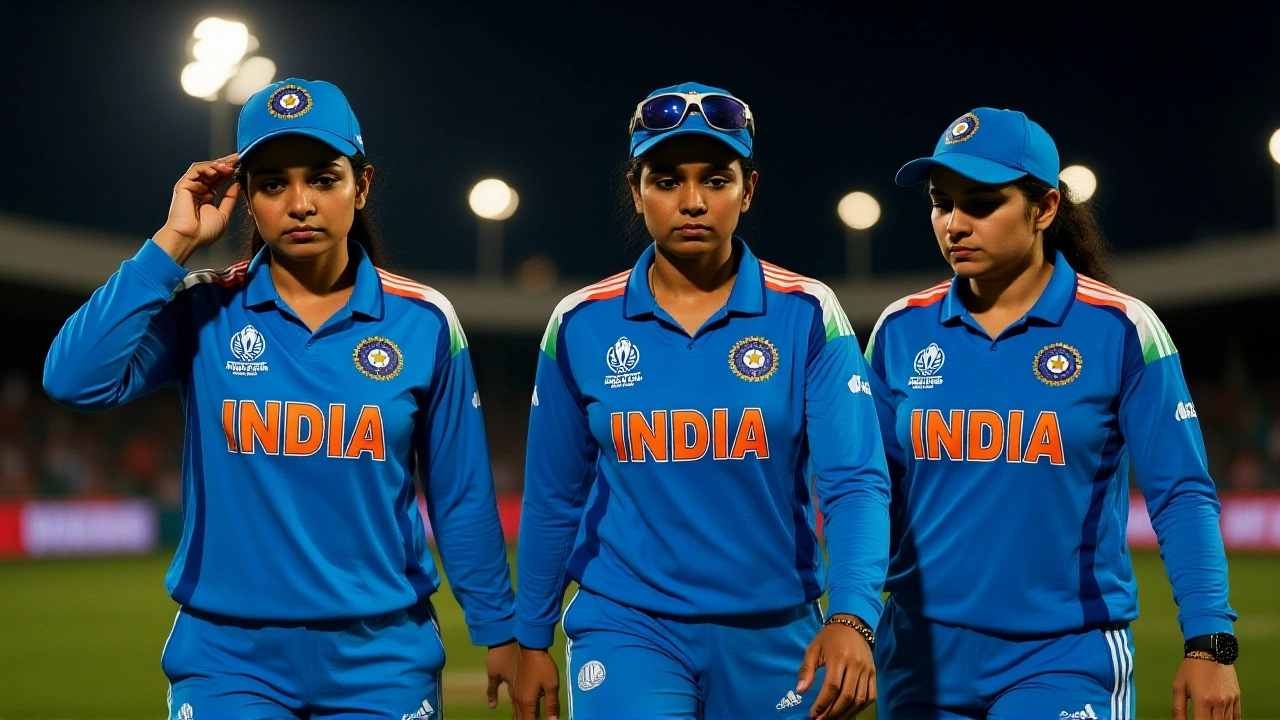
When Australia Women's Cricket Team clinched its fifth‑match victory on October 25, 2025, the scoreboard flashed 11 points – the highest tally in the 2025 Women's Cricket World Cup group stage. Right alongside South Africa Women's Cricket Team, England Women's Cricket Team and India Women's Cricket Team, they secured the coveted ‘(Q)’ – qualified – tag, meaning the semi‑finals are set before the first November rain. The tournament, overseen by the International Cricket Council (ICC), also unveiled a record‑breaking $13.88 million prize pool, a figure that dwarfs the men’s 2023 edition and signals a seismic shift toward gender equity in cricket.
How the Table Shaped Up: Numbers That Tell the Story
Australia stormed through the first six matches with five wins and one no‑result, boasting a net run rate (NRR) of +1.704. South Africa trailed closely with 10 points from five wins and a single loss, NRR +0.276. England, perched at third, gathered nine points – four wins, one loss, and one no‑result – and a healthy +1.024 NRR. Host nation India clinched the fourth spot with six points, derived from three wins and three defeats, but a respectable +0.628 NRR propelled them past Sri Lanka, New Zealand, Pakistan and Bangladesh.
- Australia: 11 pts (5‑0‑1), NRR +1.704 – Qualified
- South Africa: 10 pts (5‑1‑0), NRR +0.276 – Qualified
- England: 9 pts (4‑1‑1), NRR +1.024 – Qualified
- India: 6 pts (3‑3‑0), NRR +0.628 – Qualified
- Sri Lanka: 5 pts (1‑3‑3), NRR –1.035 – Eliminated
- New Zealand: 4 pts (1‑3‑2), NRR –0.490 – Eliminated
- Pakistan: 3 pts (0‑4‑3), NRR –2.651 – Eliminated
- Bangladesh: 2 pts (1‑5‑0), NRR –0.578 – Eliminated
Prize Money Explosion: Why It Matters
The ICC announced a $13.88 million total purse, a 297 % jump from the $3.5 million on offer in 2022. The breakdown reads:
- Winner: $6,580,000
- Runner‑up: $3,240,000
- Each semi‑finalist: $1,120,000
- Fifth & sixth place: $700,000 each
- Seventh & eighth place: $280,000 each
- Group‑stage win: approx. $34,314 (total $823,536)
- Participation fee: $250,000 per side (total $2,000,000)
“This level of investment sends a clear message that women's cricket is not a side‑show,” said Sanjay Gupta, ICC’s Director of Women’s Cricket. “It will inspire the next generation and attract sponsors who see tangible returns.”
Host Nations and Venues: The Indo‑Sri Lankan Stage
The 2025 edition is a joint‑host affair, with matches scattered across India and Sri Lanka. One of the most talked‑about fixtures took place in Indore on October 1, where Australia thumped New Zealand by 89 runs, a performance that set the tone for their unbeaten run.
Local fans in India turned up in droves, especially when the home side secured the semi‑final berth with a nail‑biting four‑run victory over New Zealand on October 23. “Playing at home adds pressure, but also a massive boost,” noted India captain Harmanpreet Kaur. “We felt the weight of a nation, and that drove us across the line.”
Reactions From the Cricketing World
South African skipper Marizanne Kapp praised her side’s consistency: “We’re only a point behind Australia, and our NRR is respectable. The semi‑finals are within reach, and we’ll give it everything.”
England’s coach, Mark Robinson, admitted a touch of frustration: “Missing out on the top two by just two points hurts, but our NRR shows we’re competitive. The brass will be happy with a semi‑final spot, and we’ll regroup for the knockout stage.”
What the Numbers Mean for Women’s Cricket
The inflated prize money isn’t just about cash; it reshapes the economics of the sport. A $6.58 million winner’s purse dwarfs the $4 million awarded to the men’s 2023 champions, making this the most lucrative cricket tournament ever for women. Analysts predict that national boards will now allocate larger budgets toward women’s development programs, grassroots coaching, and domestic leagues, hoping to replicate the high‑performance standards seen in Australia and England.
Moreover, the strong NRR differentials highlight a widening gap between the top‑four and the rest. Australia’s +1.704 NRR, for example, triples England’s +1.024, underscoring the importance of aggressive batting and disciplined bowling.
Looking Ahead: Semi‑Finals and Beyond
The next phase of the tournament will feature two semi‑finals, the venues and dates of which the ICC will announce in early November. All eyes are on the Australia‑South Africa clash, a potential showcase of power‑hitting versus disciplined seam bowling. The other semi‑final pits England against India – a classic battle of technique versus flair.
Regardless of outcomes, the tournament’s legacy is already cemented: a record prize pool, historic viewership across the subcontinent, and a clear signal that women’s cricket can command the same commercial attention as the men’s game.
Frequently Asked Questions
How does the prize pool compare to previous women’s World Cups?
The 2025 prize pool of $13.88 million is nearly four times larger than the $3.5 million offered in 2022, making it the richest edition ever for women’s cricket.
Which teams have already qualified for the semi‑finals?
Australia, South Africa, England and India have secured the four semi‑final spots, each marked with a ‘(Q)’ in the official ICC standings as of October 25, 2025.
What does a net run rate (NRR) indicate?
NRR measures a team’s average run margin per over over the tournament. A higher positive NRR, like Australia’s +1.704, reflects dominant performances and can be a tie‑breaker if points are equal.
When and where will the semi‑final matches be played?
The ICC has yet to release exact dates and venues, but announcements are expected in early November 2025, with matches likely to be hosted in major stadiums across India and Sri Lanka.
How might the increased prize money affect future tournaments?
Higher stakes are expected to attract greater sponsorship, improve player contracts, and encourage national boards to invest more in women’s domestic leagues, ultimately raising the overall standard of the game.
